The post World Wildlife Day 2019: A Global Snapshot, Glance at Nepal! appeared first on Nepali Sansar.
]]>For the first time, the United Nations dedicated #WWD2019 for the rise of awareness on the safety of marine species.
For ‘Life Below Water’
This happens to be the first World Wildlife Day to stress on life below water and marine species.
“This is the first World Wildlife Day to focus on life below water. It is a great opportunity to raise awareness about the breathtaking diversity of marine life, the crucial importance of marine species to human development, and how we can make sure it will continue to provide these services for future generations,” read an official statement.
A release on WWD official site further informed that the capacity of life below water is severely impacted and the species underwater are facing assault from an onslaught of threats.
According to the WWD site, around 200,000 species have so far been identified as marine species, while there could be more millions unidentified. Given this fact, there is also a huge human dependence on oceanic resources.
The global market value of marine & coastal resources and industries is measured at USD 3 trillion per year, almost 5 percent of global GDP.
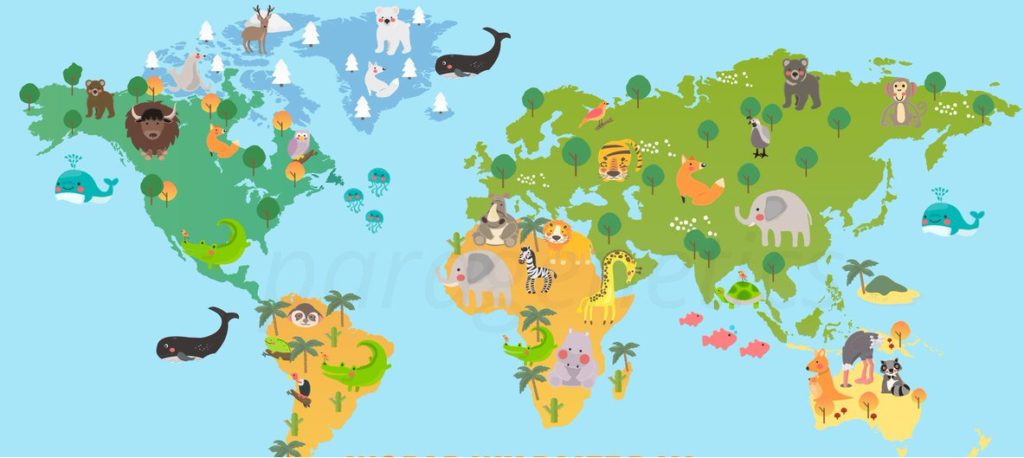
Looking at these snapshot of numbers, one can gauge the range of emphasis that ‘Life Under Water’ needs in this polluting environment!
In this regard, the United Nations and the designated authority, the Convention on International Trade in Endangered Species of Wild Fauna and Flora (CITES), urge world nations to extend their support in saving marine life.
“For marine species, CITES is at the interface between sustainable use and international trade for fisheries, working to ensure that trade in marine species listed under the Convention is legal, sustainable and traceable….
CITES plays a well-targeted role in advancing implementation of SDG 14 with trade-related measures combined with effective compliance procedures,” David Morgan, Officer-in-Charge of the CITES Secretariat said in a statement.
#WWD2019: Glance at CITES Study on Nepal’s Scenario
Like many other nations gifted with natural beauty, Nepal is also a country with rich biodiversity profile that is seen in its flora and fauna.
The country has made many achievements over the period in saving endangered species. Tigers, vultures, one-horned rhinos and more fall in the list of endangered that Nepal has been conserving!
Coming to aquatic fauna, Nepal has so far reported a list of aquatic fauna including:
- Pharping Catfish (Myersglanis blythii)
- Psilorhynchus Nepalensis
- Nepalese Minnow (Psilorhynchus pseudecheneis)
- Nepalese Snowtrout (Schizothorax macrophthalmus)
- Turcinoemacheilushimalaya
- Erethistid Catfishes (Erethistoides ascita and Erethistoides cavatura)
- Bagrid Catfish (Batasio macronotus)
- Sisorid catfishes (Pseudecheneis eddsi, Pseudecheneis crassicauda and Pseudecheneis serracula)
Different Nepali departments have been working with CITES as their support to the organization’s global cause and have also received honors for their exemplary services.
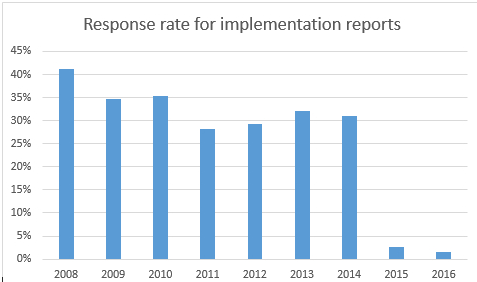
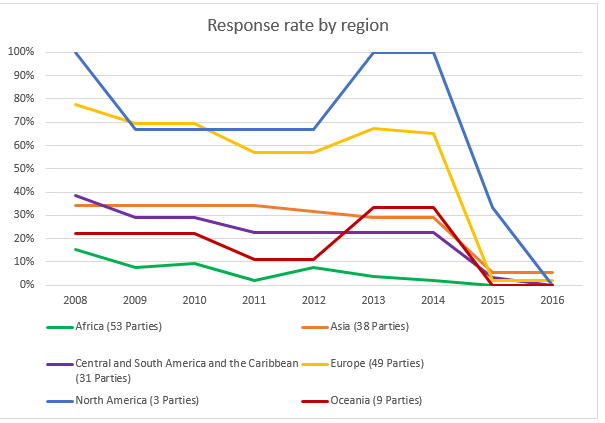
In 2006, CITES Secretary General honored the Royal Chitwan National Park Authority and the Royal Nepalese Army with the Certificate of Commendation for their efforts in combatting poaching and illegal trade of endangered species, especially leopards, rhinos and tigers.
In its last report (2012), CITES has made some key revelations pertaining to Nepal along with a special emphasis on policy gaps. Key excerpts from the report include:
- CITES was developed and implemented to regulate and control international wildlife trade, but violations of the agreement are widespread and growing world-wide, including in Nepal
- To comply with CITES in Nepal, various but discrete laws are functional.
- Many Nepali NGOs are working in biodiversity conservation and some have begun to explore illegal wildlife trade
- The Department of National Parks and Wildlife Conservation (DNPWC), Nepal’s management authority for CITES, has begun anti-poaching task forces
- The rhino population in Nepal was estimated 372 in 2005, down from a high of over 550 in 2000, because of an increase in poaching and illegal trade
- The 2008 tiger count estimated 241–304 tigers, which was a decline from 360-370 in 2010 and 34-350 in 1999-2000
- During 2004-07, 26 persons were arrested on charges of tiger poaching, and 25–29 tiger skins & 128.5 kg of bones were confiscated. The total quantity of tiger bones confiscated from poachers and traders during 2004-09 amounted to 167 kg
- Nepal has become the major route by which poachers from other nations are able to get their products in China
- The geographic setting of Nepal (porous borders with India and China) was cited as a reason of growing illicit trade. Half of the respondents, and almost all experts and government respondents stated that organized crime is prevalent and that this has encouraged poaching and illegal trade
- Some relevant laws that guide CITES implementation are: The National Parks and Wildlife Conservation Act 1973 (NPWC Act), The Forest Act 1993, The Export Import (Control)Act 1961, The Customs Act 2007, The Police Act 1995 and The Environmental Protection Act, 1997
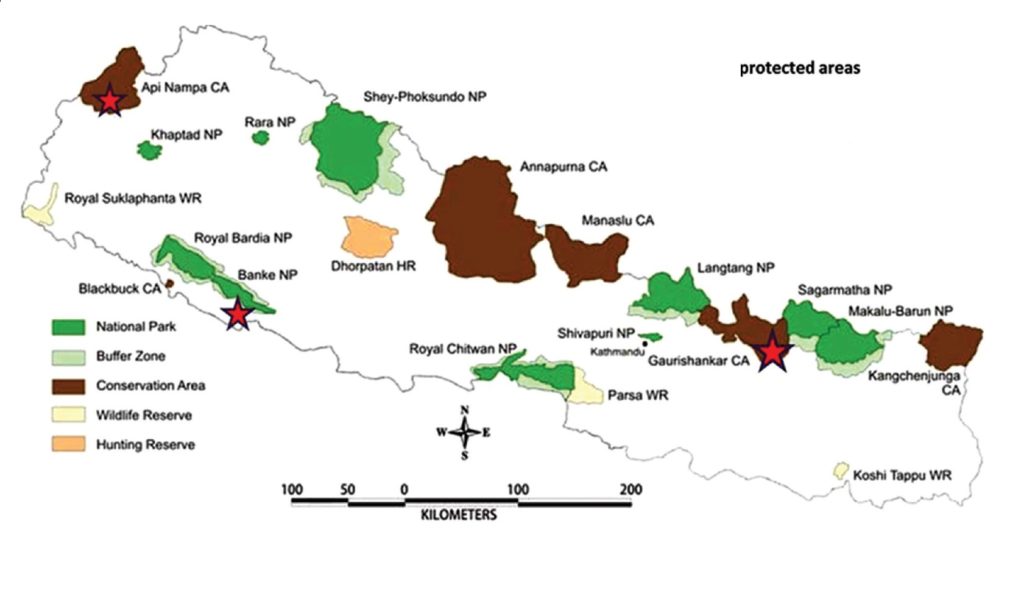
DNPWC, Department of Forests, Natural History Museum and Department of Plant Resources are the enlisted partners of CITES in Nepal as per CITES official site.
Hope Nepal’s new government functioning and newly-formulated policies will assist CITES to the possible extent in realizing the efforts to save the endangered.
The post World Wildlife Day 2019: A Global Snapshot, Glance at Nepal! appeared first on Nepali Sansar.
]]>The post New Rare, Endangered Bird Species Found in Nepal appeared first on Nepali Sansar.
]]>Over the years, the Himalayan nation has left its unique mark in conserving and identifying various endangered species. Here is another update from the country on similar lines!
According to a recent update, three rare species of birds belonging to the bird family of Accipitridae were spotted in a community forest in Gorkha region.
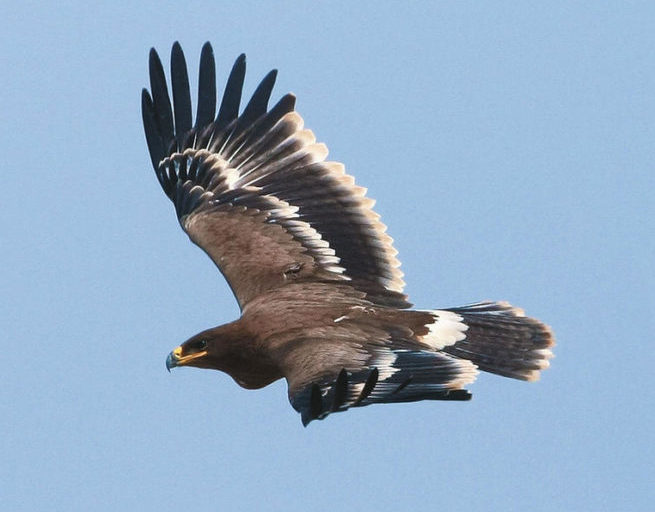
The community forest is already home to 99 species of bird varieties and researchers were happy about finding three new species: White-Rumped Vulture, Asian Woolyneck Stork and Steppe Eagle.
This is the result of a seven-month-long research by Kushal Shrestha and his team in the region. As part of their research, the team also found another bird called ‘Spiny Babbler’ found to be available only in Nepal.
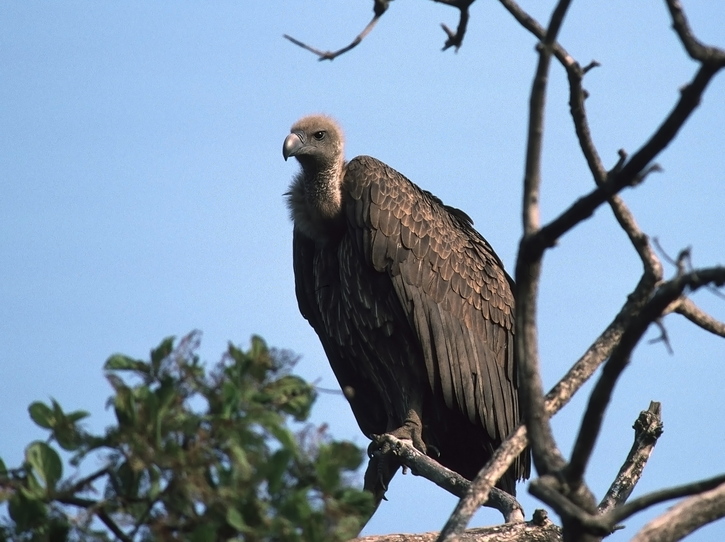
Collared Falconet and Lesser Kestrel were among other endangered bird species of birds spotted in the research.
The team was led by Shrestha, final year student pursuing Bachelor’s at the Institute of Forestry of Pokhara, and the Chandra Gurung Foundation supported the research.
While Nepal is home to around 886 species of birds, single community forest of Gorkha alone reportedly houses 99 species, giving a scope for the development of Gorkha district as a ‘center for birds research’, says the team.
The forest is spread across an area of around 300 hectares.
The post New Rare, Endangered Bird Species Found in Nepal appeared first on Nepali Sansar.
]]>The post #SavingTheEndangered: Rising Leopard Killings Concern Valley appeared first on Nepali Sansar.
]]>A joint survey by the District Forest Offices of Kathmandu, Bhaktapur and Lalitpur conducted since 2013 revealed these ground-breaking results.
Friends of Nature (FON), an organization that is surveying the human-wildlife conflict scenario in the Valley, attributes the #DeathsOfEndangered to growing urbanization within the Valley.
According to them, many of these deaths took place as the animals entered human settlements from nearby forests. Out of 29 such aforementioned cases, five were taken to the forest through rescue operations and six were taken for treatment and seven escaped.
Wildlife experts believe that lack of natural resources such as water are among factors resulting in leopard sightings in the Valley.
“As urbanization goes unchecked in Kathmandu Valley, human settlements are getting closer to forests, fragmenting leopard habitat,” says Yadav Ghimirey, Wildlife Research and Conservation Director, FON.
Effective rescue operations can save most of these endangered animals, say the experts.
Senior Vet Technician at the Central Zoo Radha Krishna Gharti states that many leopards were reportedly found to have been killed before the rescue teams arrived.
“Rescuing leopards with minimal equipment and manpower is a difficult job. It turns worse when crowds of people panic and attack leopards when it could be rescued alive,” adds Gharti.
Gharti cites lack of public awareness as a reason behind the increasing killings of leopards.
“While human settlements are moving uphill towards forest areas, leopards are coming downhill to our settlements,” says Shashank Poudel, a leopard researcher.
The study identified some areas of Bhaktapur, Lalitpur, Chandragiri and Kathmandu.
The post #SavingTheEndangered: Rising Leopard Killings Concern Valley appeared first on Nepali Sansar.
]]>The post Experience Unseen Biodiversity with Nepal’s Parsa Wildlife Reserve appeared first on Nepali Sansar.
]]>With a good number of wildlife reserves like Parsa Wildlife Reserve, the largest among others such as Chitwan National Park, Nepal tourism has a wide range of options for nature and animal lovers.
Extending up to Hetauda-Birgunj highway in the east, surrounded by the Chitwan National Park in the west, the Rapti River and Siwalik Hills in the north and thick forest cover in the south, Parsa Wildlife Reserve is spread across a total area of 637.37 sq. km..
Covering three different districts- Parsa, Makwanpur and Bara, the reserve lies in the protected area of the Inner Terai lowlands of south-central Nepal.
What Makes Parsa Attractive?
Parsa protected area is home to an estimated 919 species of flora including 298 vascular plants, 234 dicots, 58 monocots, five pteridophytes and one gymnosperm.
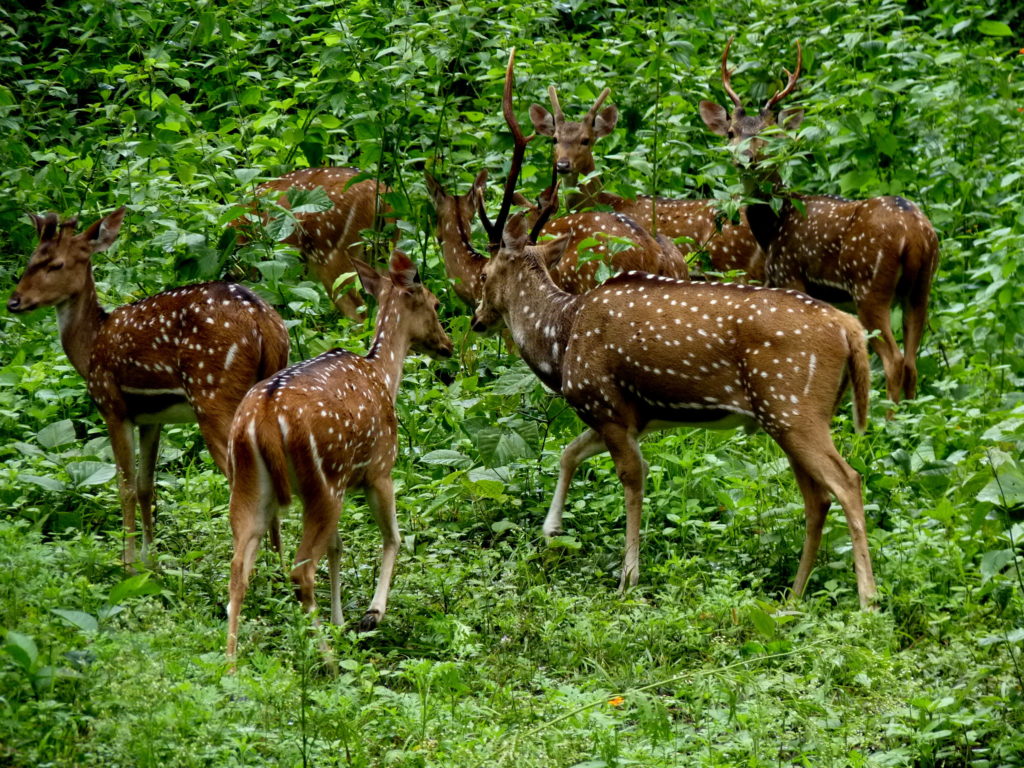 When it comes to fauna, the reserve hosts a good number of endangered species including more than 19 Bengal Tigers, 37 gaurs, wild sloth bears, Asian elephants, sambar, leopards, blue bulls, chitals, hog and barding deers, langurs, rhesus macaques, striped hyenas, jungle cats and Palm civets, among others. The reserve offers a special jungle safari to the visitors.
When it comes to fauna, the reserve hosts a good number of endangered species including more than 19 Bengal Tigers, 37 gaurs, wild sloth bears, Asian elephants, sambar, leopards, blue bulls, chitals, hog and barding deers, langurs, rhesus macaques, striped hyenas, jungle cats and Palm civets, among others. The reserve offers a special jungle safari to the visitors.
The reserve is also habitat for more than 500 bird species such as white-breasted kingfishers, paradise flycatchers, large racquet-tailed drongos and golden-backed woodpeckers, among others.
Reptiles such as python, king cobra, common cobra, common and banded Karits are seen in Parsa.
While the tropical and subtropical forest types form the typical vegetation, sal forest type makes up to 90 percent of the reserve’s vegetation.
The reserve also has the Churia hills ranging from 750-950m from east to west.
Other Places of Interest Near Parsa
Located near the reserve headquarters is a tower that provides the visitors an unforgettable viewing experience.
Khailash Bhata, located atop the hill, is a place of religious interest housing two temples (Dugdeswor Mahadev) of Lord Shiva and Goddess Parvati.
There is also an elephant camp near Amlekhgunj.
Easily Reachable!
Tourists can take on the main Kathmandu-Hetauda-Birgunj highway to reach the park’s entrance.
There are also buses from Kathmandu to reach the reserve, but takes a 6-7-hour long journey. The reserve can also be reached through a flight to Simara and then a 15-minute bus journey to the reserve’s headquarter.
The reserve presents a pleasant experience during Winter (October-December) period, during which the temperatures are usually seen at 0°C.
Whereas, the temperature goes up in the spring season (January-March), hot and humid climate during summer season (April-June) at around -40°C. July-September presents a rainy season.
The post Experience Unseen Biodiversity with Nepal’s Parsa Wildlife Reserve appeared first on Nepali Sansar.
]]>The post Conservation History: Nepal Frees Six Critically-Endangered Vultures appeared first on Nepali Sansar.
]]>This major initiative by Nepal has drawn a wide appreciation from the global conservation community and is coming at a time when the world conservation ecosystem is deeply worried about the plight of vultures, globally.
It seems the good days have come for vultures as is evident in the recent major announcements made by the world governments on the conservation of vulture species.
The Convention on Migratory Species Conference of Parties, held in Manila in October 2017, witnessed the announcement of a Multi-species Action Plan to save 15 vulture species across 128 countries.
Next to that, the Madras High Court, India has also passed a ruling restricting the dosage of vulture-killing drug, Diclofenac, to save vultures.
Now it’s Nepal, in a move that is seen for the first time in decades. This move also marks South Asia’s first-ever release of captive-reared critically-endangered birds.
Vulture Safe Zone At its Best
The Bird Conservation Nepal (BCN, BirdLife in Nepal) and RSPB (BirdLife in the United Kingdom) have been relentlessly working, under the SAVE (Saving Asia’s Vultures from Extinction) consortium, against the serious threats posed by painkiller drug diclofenac to the vulture species.
“Within the provisional Vulture Safe Zone (VSZ), we conduct undercover surveys of pharmacies and have found no diclofenac in the last four years. We also conduct surveys of vulture populations and have found that the population declines have slowed and possibly reversed,” says Krishna Bhusal, BCN.
Meanwhile, Toby Galligan, Senior Conservation Scientist, RSPB Centre for Conservation Science says, “It is time to assess whether the provisional VSZ has become a true VSZ, but only the vultures can show us that.”
Toby further informed that they are using satellite telemetry to track wild white-rumped vultures remotely and in the field.
“If any die we can recover them, examine them for cause of death and prevent other vultures dying from that cause,” added Toby.
Months prior to the release of six birds, SAVE had also tracked several species of wild vultures and concluded that all of them are currently alive and well.
The post Conservation History: Nepal Frees Six Critically-Endangered Vultures appeared first on Nepali Sansar.
]]>